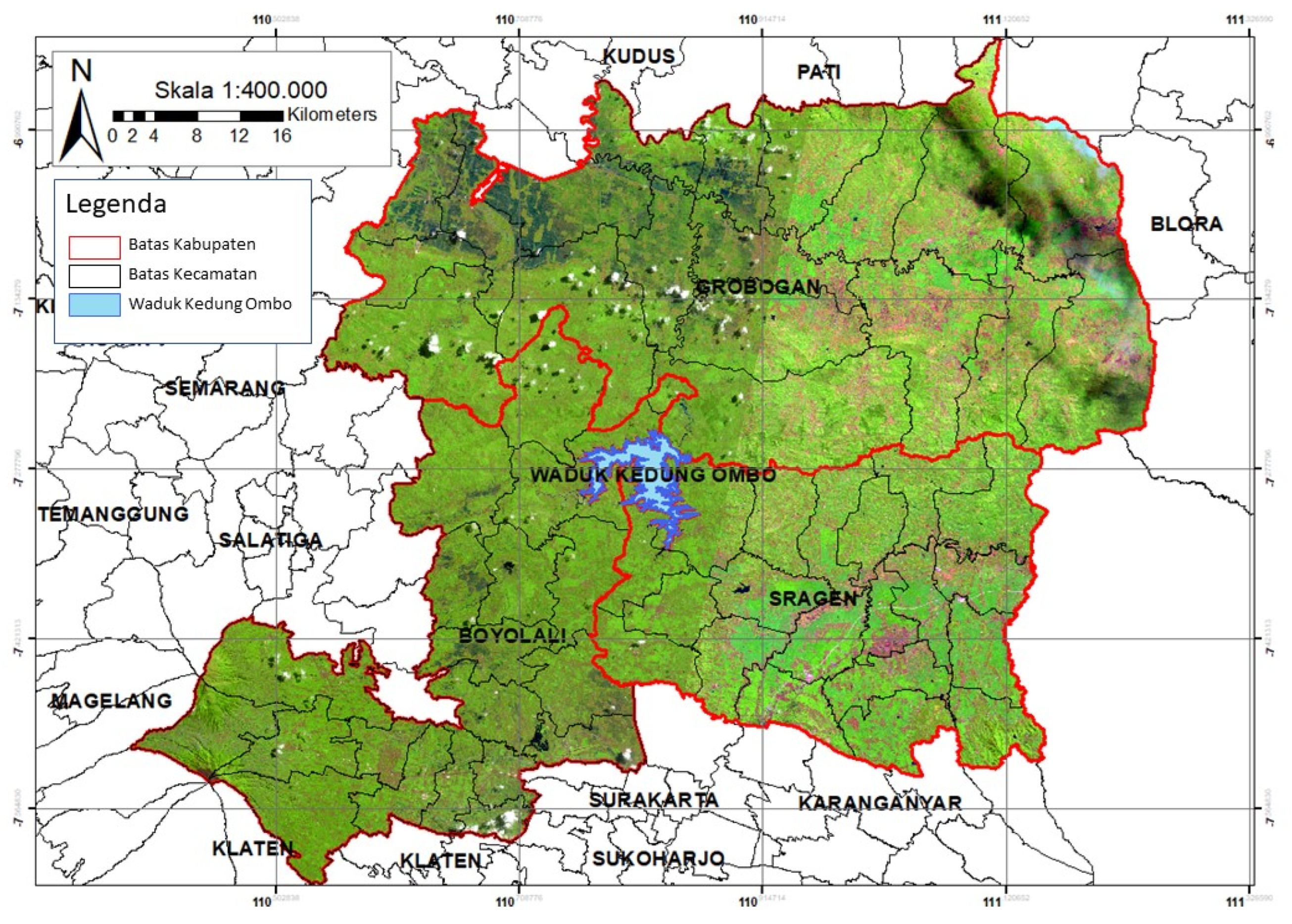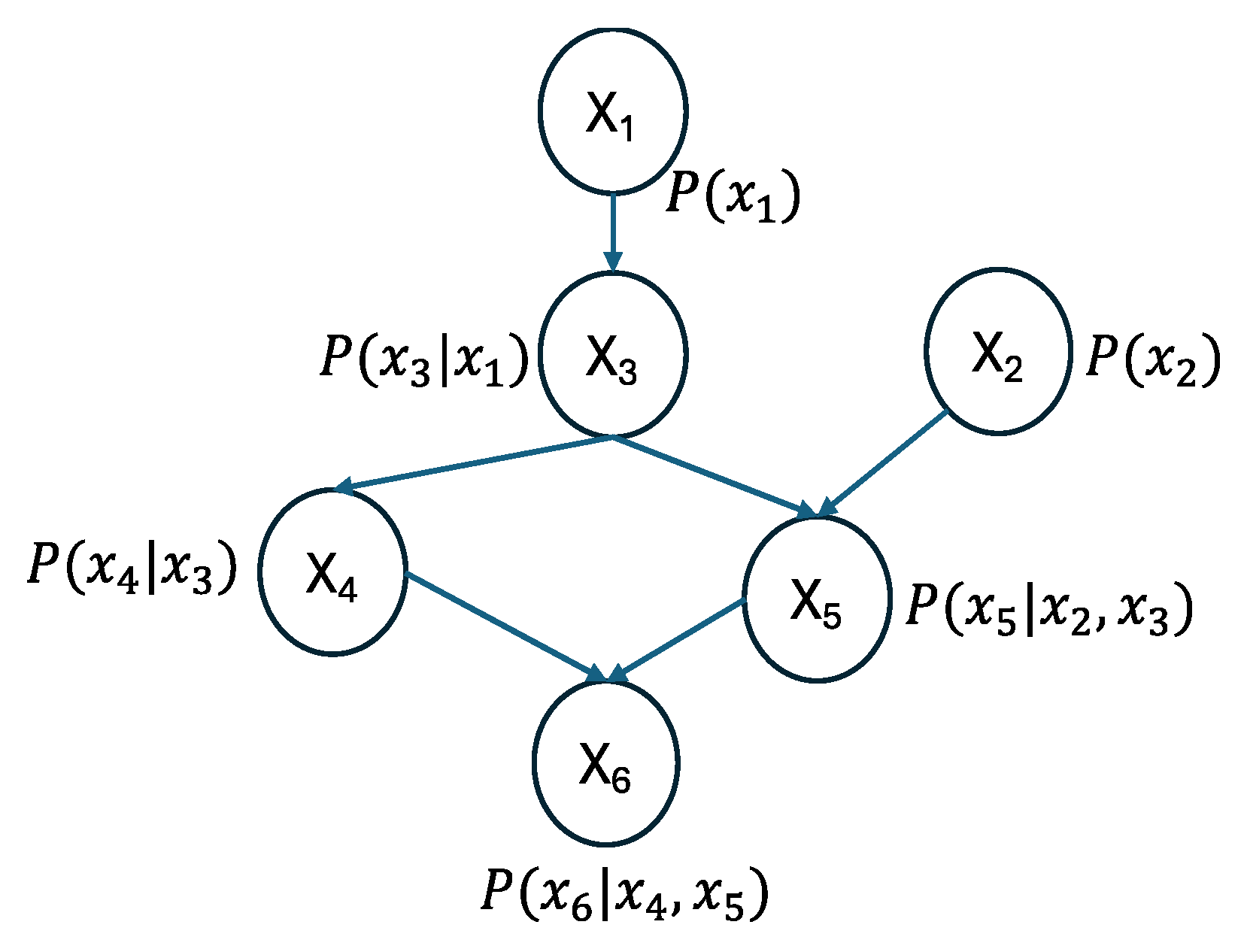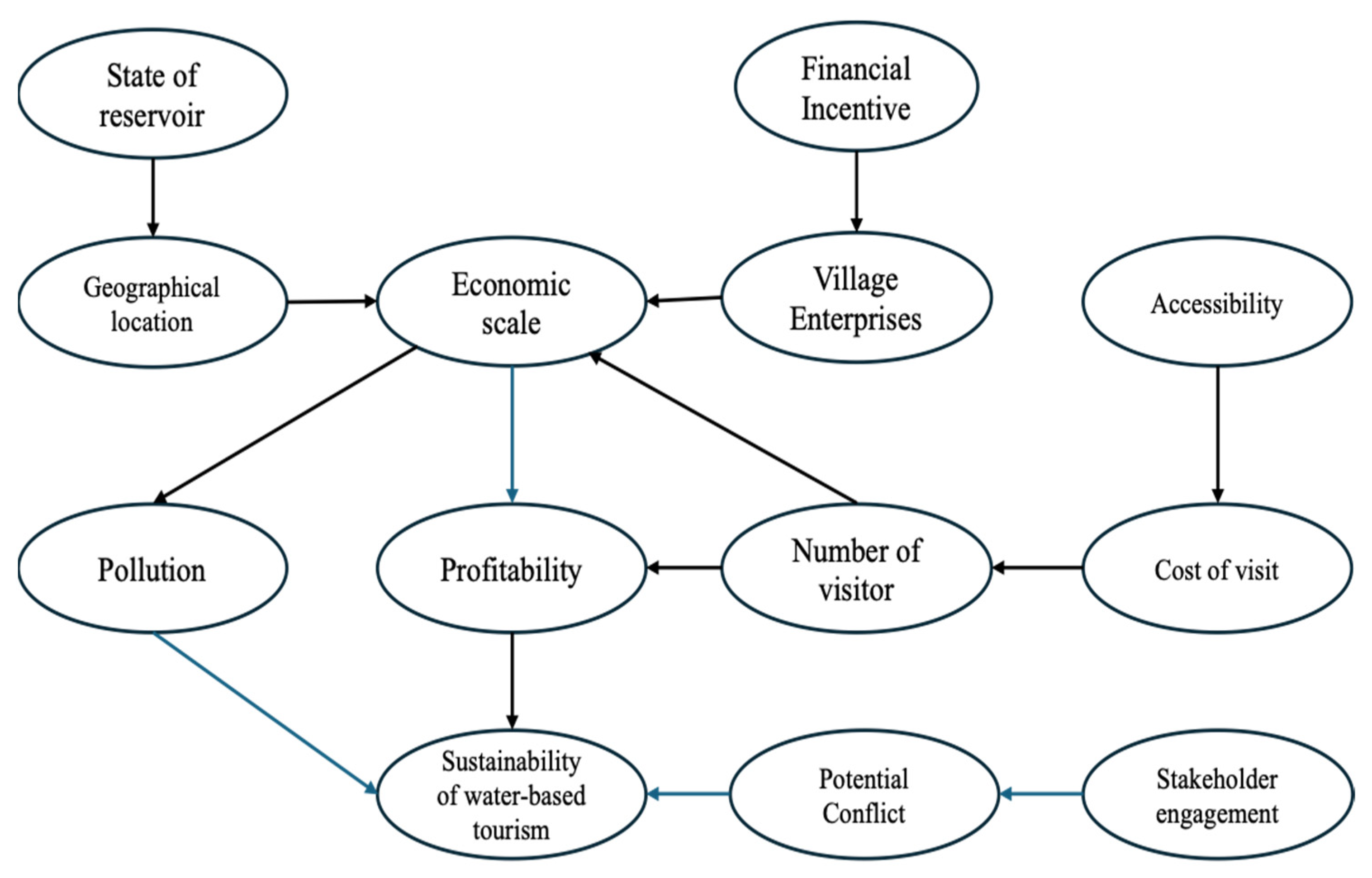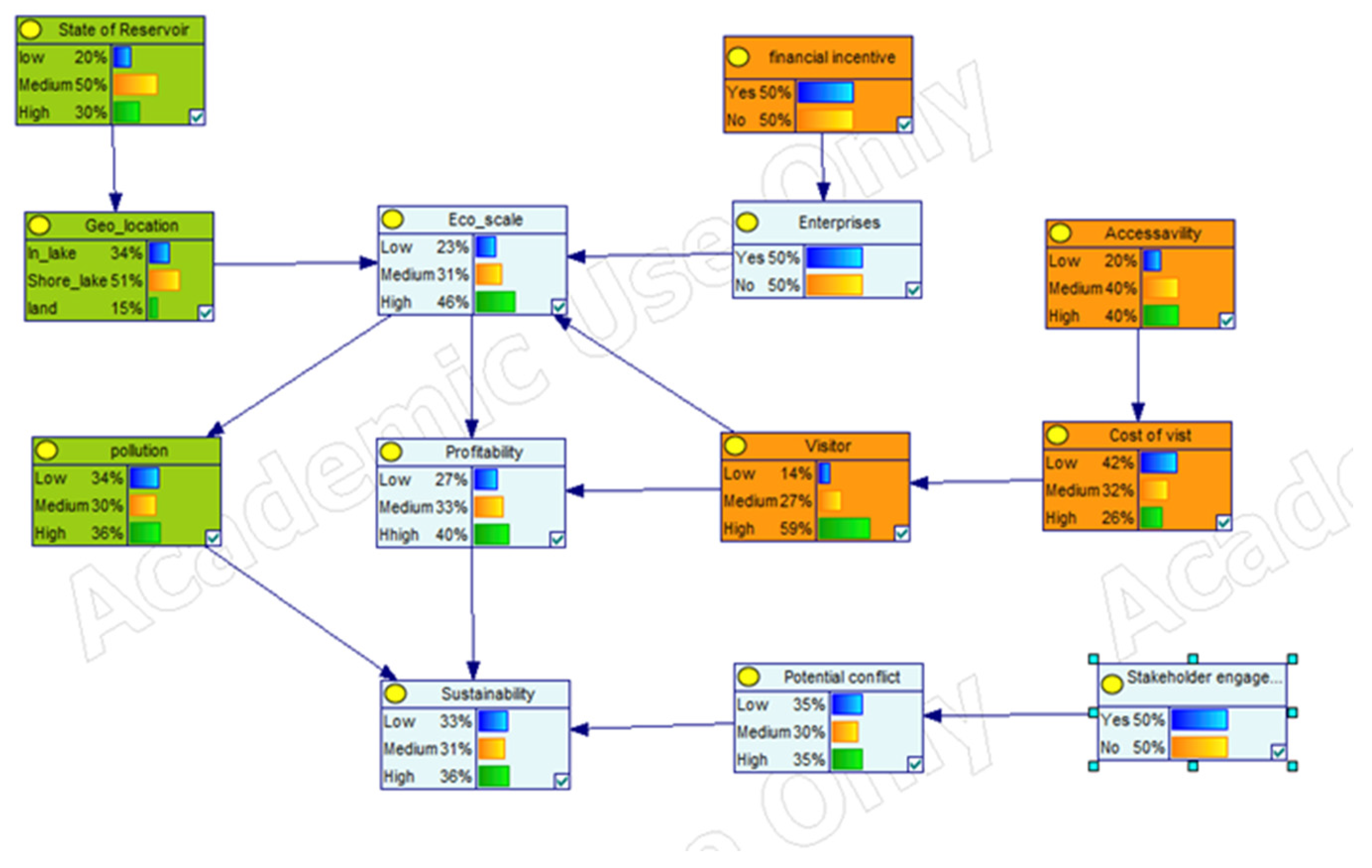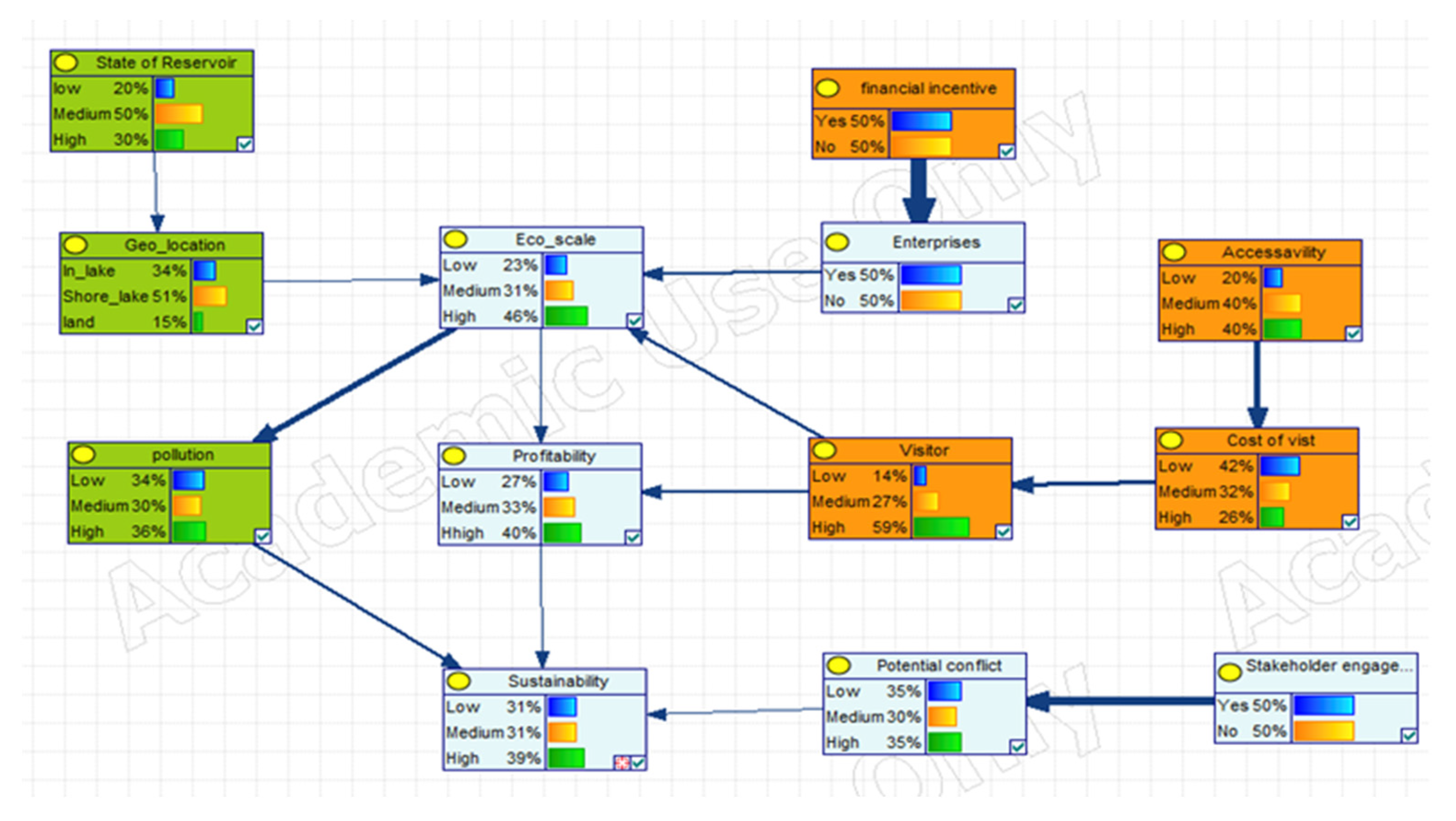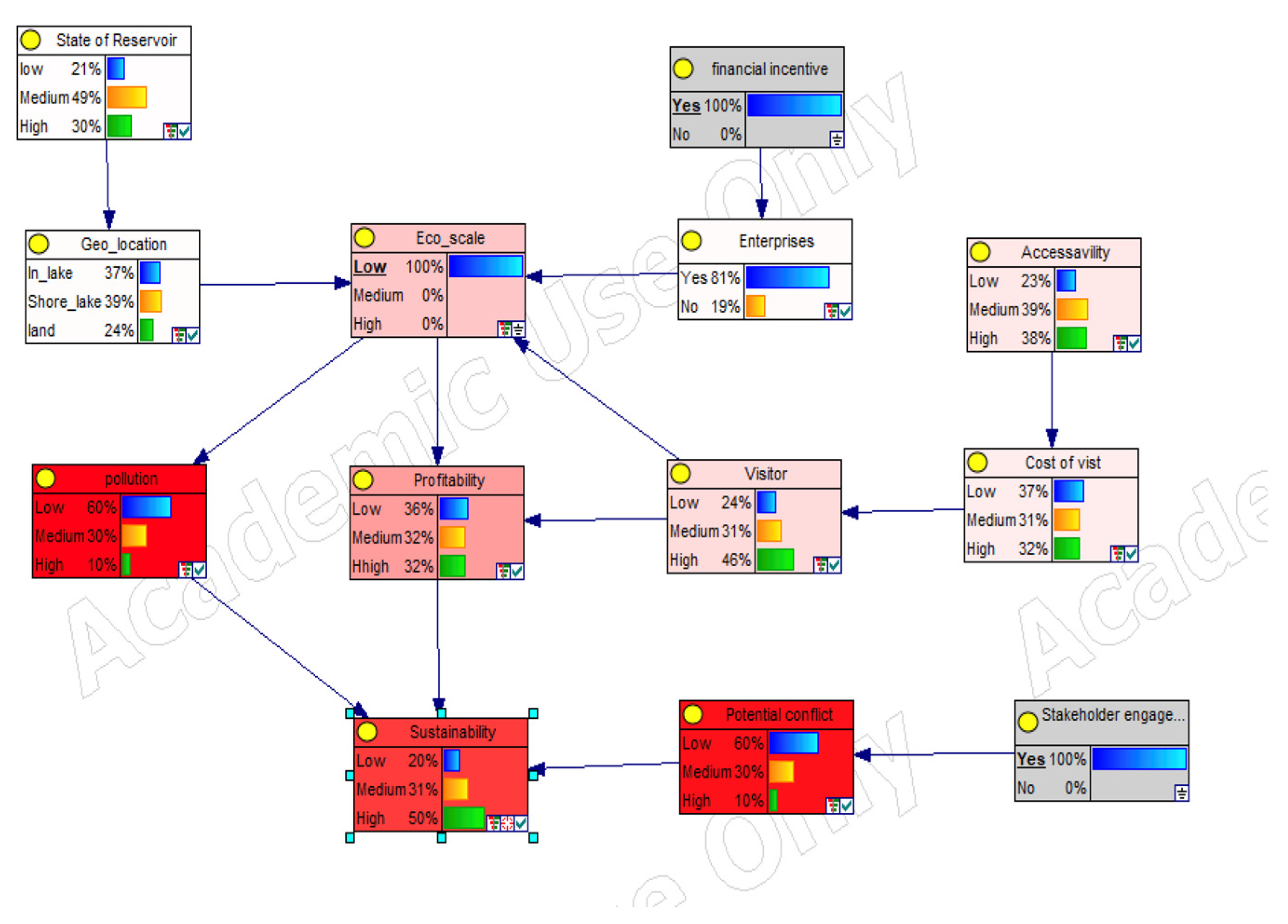1. Introduction
Indonesia is renowned as a significant destination for rural tourism, featuring stunning natural landscapes, dynamic traditions, and a distinctive rural lifestyle [
1]. In Indonesia, rural tourism is institutionalized in the form of tourist villages. A tourist village is an integration of attractions, accommodations, and supporting facilities in a community life structure united by applicable procedures and traditions [
2]. Based on Law Number 10 of 2009 and Number 6 of 2014 concerning tourism, the development of tourist villages is ongoing. In 2021, the Coordinating Ministry for Sector the Economy determined that tourist villages are the direction of development of national tourism is expected to become one form of acceleration of rural development to promote prosperous communities through increased employment opportunities, increasing rural economic growth, preserving nature and culture, and improving infrastructure in rural areas.
One area that has significant rural tourism potential is the Kedung Ombo reservoir area in Central Java Province [
2]. The largest reservoir in Southeast Asia presents water tourism opportunities as a primary attraction besides culinary tourism, nature tourism, and agro-tourism [
3]. From an environmental perspective, water-based tourism offers essential opportunities for developing and implementing new sustainable models for managing water resources, which positively impact the conservation of the environment, biodiversity, and local ecosystems [
4]. Several community groups in the Kedung Ombo area have built tourist spot attractions inside, outside, and around the reservoir area, offering multiple experiences. This is not only due to public awareness of the tourism potential of the reservoir starting to grow but also because the livelihoods of the population, who are generally farmers, are decreasing as a result of a large amount of agricultural land being submerged as a result of the construction of the reservoir in this area. Some attractions in this area are easily accessible, and others pose more of a challenge. However, despite being developed since 2010, tourism in this area has not progressed significantly in terms of visitor numbers, infrastructure completeness, and management income, so it is almost unsustainable. The average number of visitors at each attraction spot is 50 to 100 people daily. Only on holidays, visitors increase to 200–300 people.
Several factors influence less sustainable tourism in the Kedung Ombo area: (1) management component, related to weak management ability in planning, marketing, and creativity in developing attractions; and financial support; (2) external conditions, related to reservoir management policies and forest area management policies regarding the use of reservoir areas and land use which limitation locations for tourism, and support from other stakeholders; (3) environment, related to unstable reservoir water conditions related to the season where in the rainy season the water volume is high while in the dry season, the water volume is significantly reduced, thus affecting the appearance and attractiveness of the attraction. Therefore, comprehensive constructive improvements are necessary to transform towards advanced, competitive, and sustainable tourism. This effort is not only to increase the number of visitors and income for managers but also to increase competitiveness, considering that in the location, a tourist destination has been built by the private sector with more attractive features and facilities.
According to W. An and S. Alarcón [
5], advanced and sustainable rural tourism must consider host and visitor welfare, waste management, local development, tourist pressure at the busiest times, environmental degradation, social impacts, and financial returns as targets to be achieved. Moreover, integrating uncertainties arising from interactions between human systems and the environment must be considered when managing tourist villages. Achieving advanced and sustainable rural tourism development is a complex process that cannot be accomplished overnight. According to Ariyani and Fauzi [
2], these efforts require appropriate development scenarios supported by effective management, careful coordination between various institutions’ policies, and understanding of future changes.
This paper aims to identify critical factors for effectively managing the tourist village in Kedung Ombo through a participatory approach and explore the relationships between tourism management components, external and internal conditions, and causal relationships between its constituent elements. To achieve this goal, an exploratory empirical study and focus group discussion method were carried out to collect primary data and apply the Bayesian belief network (BBN) framework to analyze the data. BBN, abbreviated as Bayesian network (BN), will help visually identify interactions between determinant factors to capture the intricacies of the scenario search process and facilitate comprehensive scenario creation.
The water-based tourism in the area is situated in a dam reservoir primarily designated for agricultural irrigation and hydroelectricity purposes. The construction of the dam resulted in the submergence of several villages in the vicinity, leading to the displacement of jobs and livelihoods within the communities. The authorities’ decision to enable villagers to explore alternative livelihoods post-dam inundation demonstrates a compassionate approach to providing employment opportunities and income sources for the affected communities. However, the sustainability of income generated from small-scale tourism enterprises is heavily reliant on various factors, including the condition of the reservoir, stakeholder engagement, government interventions, and the scale of their businesses.
Evaluating this intricate interplay of factors has not been previously undertaken in rural tourism studies, particularly in the context of multi-user water-based activities like those found in the Kedung Ombo area. The limited understanding of these complex interactions and the uncertainties surrounding decision-making processes in managing water-based businesses have not been adequately addressed in prior studies on rural tourism in developing countries such as Indonesia. Utilizing Bayesian network analysis offers a method to capture these complexities, with this study representing the first attempt to assess such intricate management processes involving inputs from stakeholders in the area.
In light of the aforementioned scenario, two primary problems emerge concerning the management of tourism in the Kedung Ombo area:
How can the sustainability of water-based tourism be ensured amidst uncertainties stemming from the interplay of stakeholder engagements, reservoir conditions, and government interventions?
How can the intricate interactions and uncertainties in decision-making processes involving diverse stakeholders be effectively captured in a simplified model to provide inputs for improved policies in rural development-based tourism?
This article builds upon two prior articles that researchers have compiled on sustainable Kedung Ombo tourism development scenarios [
1,
3]. Both of these articles utilize the Multipol framework, a prospective analysis technique that focuses on identifying and evaluating alternative actions, criteria, and policies for scenario development. Due to the perceived lack of comprehensiveness and specificity in the previously identified scenarios, this research employs the Bayesian network method, which visually explains the scenario development process to facilitate decision-making. The paper is structured into five sections. After the introduction,
Section 2 provides a literature review.
Section 3 outlines the location of the study, materials, and method used for the study.
Section 4 presents the study’s results and discussion;
Section 5 offers conclusions.
3. Materials and Methods
This research was conducted in the Kedung Ombo reservoir area in Central Java Province. The dam’s location is at coordinates 7°15′33″ South Latitude and 110°50′18″ East Longitude. The Kedung Ombo reservoir is the largest in Southeast Asia, with an area of 6576 hectares consisting of 2830 hectares of water and 3746 hectares of plains, and crosses three districts: Grobogan Regency, Sragen Regency, and Boyolali Regency (
Figure 1). Most of the population in the fields works as farmers and fishermen, and only a few are entrepreneurs.
This study utilizes BN to assess the sustainability level of rural-based tourism in water-based tourism at Kedung Ombo. BN as an appropriate tool for solving complex problems characterized by uncertainty inherent in the tourism system [
37,
38,
39], especially regarding tourist preferences, loyalty, arrivals, and tourist behavior [
40], which is BNN’s advantage and helps the decision-making process.The Bayesian network is becoming increasingly popular in tourism studies. For instance, although not directly related to rural development, the Bayesian network analyzed tourist preferences within a marketing context [
41]. The Bayesian network to identify and deep learn for demand forecasting tourists [
20]. Regarding rural tourism and rural development, the most relevant application of the Bayesian network can be seen in the relationship between residents’ perceptions of landscape structure and agritourism restaurants in the eastern lowlands of Ferrara, Italy [
42]. Applications of BBN discussing rural tourism’s role in rural development and sustainability are relatively scarce.
BN is a graphical model that presents causal relationships between variables with their conditional probabilities [
43]. It provides a useful way to deal with complex problems because it combines powerful probabilistic methods with the clarity of graphs that encode causal relationships between variables [
44]. It can also be used to represent dependencies between variables, to provide a concise specification of joint probability distributions, and to describe complex interactions and causal relationships between variables in terms of their individual probability densities and dependencies as determined by Conditional Probability Tables (CPT) [
45], whose information can be gathered from empirical data, expert (domain) knowledge, or predictions from bottom-up model output [
46]. BN are modeling tools; it has been used successfully in many real-world problems, such as natural resource management [
47,
48], project management, ecosystem services [
43], environmental management [
49], business performance [
50], and medical and forensic sciences [
51]. BBN is, therefore, suitable for a testable model that is tested on an imperial basis to explain which factors are associated with export trends in Vietnam’s coffee sector [
52]. In contrast to previous research, BBN was used in this research to identify key factors in water-based rural tourism governance in the dam area and analyze the interaction of these factors as a basis for developing an advanced and competitive tourist village.
A Bayesian network comprises two components: a qualitative component represented by a directed acyclic graph (DAG) showing the relationships among variables and a quantitative component consisting of probabilities of the variables in the form of conditional probabilistic tables (CPT) [
53]. The basic structure of the BN, involving six variables, is illustrated in
Figure 2.
In
Figure 2, an outgoing arrow from
to
, for example, indicates that the probabilities of states in
are dependent on the outcome of node
. Similarly, probabilities of state in
are dependent on the outcome of both nodes
and
. Variables
and
are known as the parents’ variables, and variables
, and
are the child’s variables. Mathematically, the DAG for variable
, for example, is written as:
For a network containing
n variables, the probability of complete BN structure is calculated by joint probability distribution as written:
is the full joint probability distribution, and is the parent of node of i.
One of the key advantages of BN is its ability to model changes in input variables based on the output level [
54], known as “what-if” or scenario analysis [
55]. For instance, policymakers can easily test policy interventions by adjusting inputs and observing the resulting impact within the network structure. Moreover, the causal relationships in BBN are straightforward to comprehend, and additional variables can be seamlessly incorporated as needed [
51,
52]. The network structure is intuitively appealing and convenient for illustrating intervention theories and evaluating them against real-world data [
56]. In addition to the above advantages, BN can handle uncertainty in probabilistic terms rigorously; hence, it is suitable for analysis in a management context and especially relevant in a poor data context [
57].
3.1. Data Collection
3.1.1. Identifying Variables
To determine factors related to the sustainability of water-based rural tourism in Kedung Ombo, Central Java, first, we have to identify critical variables that determine sustainable tourism village management. We follow Cain [
58] to identify variables using the BN framework. In the BN framework, variables can be identified using the following interaction of variables: objectives, intervention, intermediate factors, controlling factors, implementation factors, and additional impact variables [
58]. The interaction of these variables can be described in the following diagram which quoted from Cain (2001) (
Figure 3).
Data for this study were collected through a focus group discussion held in the Kedung Ombo reservoir area in August 2023. The discussion involved twenty stakeholders in Kedung Ombo Water-based tourism (
Table 1). Participants in the focus group came from three tourist villages in the Kedung Ombo reservoir area: Boyolalayar, Wonosari, and Wanawisata, and the management of the reservoir. The selection of participants was based on their involvement and activity in the development and management of tourist villages, their interest in the progress of tourist villages, and their knowledge of the conditions in the Kedung Ombo reservoir area.
The FGD aims to determine the determining variables for the sustainability of water-based tourism in Kedung Ombo and determine the structure of the BN network. The sequence of data collection is illustrated in
Figure 4. In accordance with the BN framework, variables were identified from two different sources, namely, previous information sourced from secondary data (village reports and other publications) and stakeholder input (FGD participants). The stakeholders are grouped into three groups for this purpose. Input from each group is then consolidated to form a network structure agreed upon by the FGD participants. This process involves repeated confirmations and consensus to increase network stability, as indicated by the cross-reversal arrows. Once an agreed BN structure is established, participants create a conditional probability table (CPT). Researchers utilized this CPT to analyze the results using GeNiew Bayesian 4.1. network software.
In the study, participants are assigned to adjust or add variables based on their point of view in managing village tourism using variable categories that have been determined according to Cain’s framework (
Table 2, column 1). After reaching an agreement on these variables, each group then explores the network or relationship between variables (
Table 2, column 2) and assesses the probability of each variable, as described in
Table 2, column 3. The final stage of the focus group discussion is reaching a consensus or confirming final networks and probabilities. The variables in
Table 2 are the results of a focus group discussion agreement regarding the sustainability of Kedung Ombo water-based tourism.
The variables in the study exhibit a range of measurement scales, from discrete categories like “Yes” and “No” to interval scales such as “Low,” “Medium,” and “High,” with the exception of geographical location, which is determined by proximity to the lake. For instance, the measurement of financial incentive is captured as a binary “Yes” or “No” response, reflecting stakeholders’ current perception of the availability of the incentive rather than its specific magnitude. Similarly, stakeholder engagement is assessed using a binary “Yes” or “No” scale, as quantifying the extent of engagement on a numerical scale is challenging. The focus is on determining whether stakeholders are engaged or not, rather than quantifying the level of engagement.
3.1.2. BN Structure and CPT
Based on those agreed variables, an initial DAG BN structure was constructed with the stakeholder, as depicted in
Figure 5.
As can be seen from
Figure 5, the sustainability of water-based village tourism is a product of three main aspects, namely environment (pollution), which depends on the state of the reservoir, economic scale, and geographical location, followed by the second aspect, which is the economic component (profitability), and social aspect (stakeholder engagement and potential conflict).
The interconnection between variables can be outlined as follows. The sustainability of water-based tourism is influenced by a range of factors, both directly and indirectly. Primarily, the profitability of the business is a key consideration for business operators (such as small cafes, boat rentals, and restaurants). However, this factor is impacted by the number of visitors and the economic scale, whether low or medium. The number of visitors is contingent on the cost of the visit and the accessibility of the location. On the other hand, the economic scale of the business is determined by the geographical location and the level of enterprise ownership, whether village-owned or not.
The geographical location of the business dictates the scale of the operation, as businesses farther from the shore are more likely to be smaller in scale. This is due to restrictions imposed by authorities, limiting the size of restaurants or cafes within the lake to prevent pollution and ensure safety for all individuals.
The second factor that is likely to impact sustainability is the degree of stakeholder engagement, which is closely linked to the potential for conflicts within the business. A higher level of stakeholder engagement reduces the likelihood of conflicts arising between business players and the broader community.
Another factor influencing sustainability is the environmental aspect, as indicated by the pollution levels in the water body, which are influenced by the economic scale of the business. A larger business scale is associated with a higher likelihood of increased pollution levels, thereby affecting the long-term sustainability of water-based tourism.
At the parent node level, financial incentives, the condition of the reservoir (e.g., suitability for activities, such as during the rainy season when crossing the lake may be hazardous), and accessibility are external factors considered independent, thus serving as parent nodes in the implementation of the Bayesian network model.
Once the BN structure had been constructed, the stakeholders were asked to elicit the probability of each node based on the measurement described in
Table 2. The probabilities were put in CPT to fill out prior probabilities for BN structure using GeNie Academic Edition software (
https://www.bayesfusion.com/genie/) (accessed on 5 May 2023).
4. Results and Discussions
4.1. Strength Analysis
The structure of BN of prior probabilities for the sustainability of water-based village tourism can be seen in
Figure 6. As can be seen from
Figure 6, with the current value of CPT obtained from stakeholder elicitation, using a 50:50 change of financial incentive and 50:50 chance of stakeholder engagement as implementing nodes, the level of sustainability of water-based tourism is approximately 36% high.
The next step in the Bayesian network analysis process is finding the relationships between the variables inside the network structure. GeNie uses influence diagrams for strength analysis. Strength analysis allows us to comprehend the potential cause-and-effect relationships among variables, with the width of the arc representing the strength of each connection between parent and child nodes [
59].
Figure 6 shows the strength of influence in the BN structure of water-based tourism, indicated by the thickness of the arc. As shown in
Figure 7, the thickness of the arcs can be seen from the nodes, from financial incentives to enterprises, economic scale to pollution, stakeholder engagement to potential conflict, and accessibility to the cost of visit. This finding is confirmed by the value of average Euclidian distance, as presented in
Table 3.
With an average score of 0.8 and a maximum score of 0.8, financial incentives on enterprises have the most significant impact, as shown in
Table 3. Stakeholder involvement that could result in conflicts comes next with an average of 0.5 and a maximum of 0.5. Additionally, there is an influence from accessibility to the cost of visit, with an average of 0.389 and a maximum of 0.557, as well as an influence from economic scale to pollution, with an average of 0.33 and a maximum of 0.5.
Financial incentives are essential for developing rural tourism, especially since many businesses in the area are small-scale enterprises with limited access to bank loans and resources for expansion. While the Indonesian government offers small loans for such enterprises, accessing them can be challenging due to strict banking regulations, such as stringent reporting requirements, the need for assets as collateral, and demonstrating business feasibility. Natural factors like weather and climate can also pose uncertainties for water-based tourism in rural areas, affecting dam water levels and access to facilities. Heavy rains may raise water levels in the dam, impacting access to lakeside restaurants and other amenities. Weather conditions can also affect transportation infrastructure, with rural roads often unpaved and hazardous for visitors. In such circumstances, government-provided financial incentives can alleviate the capital burden faced by businesses, eliminating the need to rely on bank loans and navigate complex loan procedures.
Stakeholder engagement is the second most important aspect of water-based tourism in the Kedung Ombo area, as it involves a wide range of stakeholders. These include the central government, specifically the Ministry of Public Affairs, responsible for dam management, and local village governments overseeing village administration. Additionally, there are various business entities operating restaurants, boats, and floating fish cages, along with farmers relying on water irrigation for their livelihoods. Management-level stakeholders such as village heads, tourism advocacy groups, local public figures, and others are also part of the landscape. Given these stakeholders’ diverse objectives and interests, managing their varying perspectives can be challenging due to differences in influence. Strengthening stakeholder engagement is crucial to mitigating potential conflicts among stakeholders and ensuring the sustainability of water-based tourism in the area.
Accessibility is the third factor influencing sustainability, particularly regarding visitation costs impacting the number of tourists at the site. Currently, most roads leading to the dam are unpaved, and accessibility is weather-dependent. In the dry season, the roads are passable for two-wheel and four-wheel vehicles, but during the rainy season, they become slippery and costly, deterring visitors. This can decrease visitor numbers and affect business profitability in the area.
Economic scale is another important factor relating to the business’s economic activities. Larger businesses are more likely to discharge waste into the dam water, leading to pollution that impacts visitor perceptions of cleanliness and water quality. Increased pollution can harm the electricity turbines, prompting authorities to intervene and potentially revoke permits for cafes or restaurants near or within the dam’s water area. These factors collectively impact business sustainability and the economic performance of the rural area.
4.2. Scenarios Analysis
One of the benefits of Bayesian networks is their ability to conduct scenario analysis or what-if analysis. The goal is to determine how specific variables of interest would be affected if certain variables were altered. The changes in the variables of interest are reflected in the posterior probability changes of those variables. During a focus group discussion, stakeholders expressed interest in understanding how five key variables—pollution, profitability, potential conflict, sustainability, and stakeholder engagement—would be impacted by different scenarios. These scenarios involved setting the rural fund to “yes,” the economic scale to “low,” accessibility to “high,” the cost of visit to “low,” stakeholder engagement to “high,” and a combination of all five scenarios as depicted in
Figure 8. These factors were chosen based on stakeholders’ dedication to the future management of water-based tourism. Stakeholders stressed the significance of financial incentives and engagement while advocating for a low economic scale (suitable for small and medium enterprises) to protect the ecosystem of the reservoir (pollution), particularly given the businesses’ proximity to the lake’s shore. In the Bayesian network structure, this can be achieved by designating the five main arcs as target nodes with a probability value of 100% or labeling them as “evidence” in Genie Software.
As indicated in
Table 2, enabling the financial incentive (“yes”) impacts the profitability level and decreases the probability of low pollution to 31%, but has minimal effect on reducing conflict and enhancing sustainability (
Table 4). Additionally, adjusting the accessibility variable raises the probability of profitability to 41% and marginally increases sustainability by only 1%. A notable increase in the likelihood of reducing pollution levels is observed when setting the economic scale to low, currently displayed in the region. In this scenario, the probability of pollution reduction rises to 60%, while the sustainability of water-based tourism increases to 43% from the baseline (prior probability). However, this scenario decreases the likelihood of achieving high profitability to 32%.
The scenario involving a lower cost of visit would raise the probability of profitability to 42%. However, it would decrease the probability of low pollution to 32% while maintaining the probabilities of low potential conflict and high sustainability at the baseline level. On the other hand, increasing stakeholder engagement would notably increase the probability of reducing potential conflict to 60%, as well as increasing the probabilities of reducing pollution and enhancing sustainability to 46% and 40%, respectively, while keeping the probability of profitability unchanged from the baseline.
A potentially more favorable outcome could be achieved by combining all five scenarios. In this combined scenario, the overall performance of water-based tourism improved, except for profitability. Under this combined scenario, the probability of reducing pollution levels increased to 60%, potential conflict to 60%, and sustainability to 48%. These probabilities are significantly higher than those observed when each scenario was run independently.
4.3. Sensitivity Analysis
One of the critical benefits of Bayesian networks is their ability to conduct sensitivity analyses on target nodes in response to changes in evidence [
60]. In this particular study, a sensitivity analysis was performed to identify which nodes or variables are most affected by changes in the probability of sustainability in water-based tourism. Sustainability is considered the target node, while other variables serve as evidence nodes. In
Figure 9, financial incentives “yes,” stakeholder engagement “yes,” and economic scale “low” were set as evidence. GeNie utilizes color-coded and tornado diagrams to assess the sensitivity of these variables. The node colors’ intensity reflects their sensitivity level, with darker colors indicating greater sensitivity.
Figure 9 illustrates the Bayesian network structure with the identified sensitive nodes. Potential conflict, pollution, and profitability are highlighted as sensitive nodes (depicted in red) that significantly impact the likelihood of sustainability.
Figure 10 presents the tornado diagram illustrating the sensitivity analysis for the sustainability of water-based rural tourism in Kedung Ombo, Central Java.
Table 5 presents the change in net effect of the variables selected (sensitive variables) when nodes of stakeholder, financial, and economic scale were selected as evidence. The chart’s horizontal axis shows the absolute change in the posterior probability of sustainability. At the same time, the length of the bars indicates the impact intensity of specific nodes on the target nodes, which in this case is the sustainability of water-based tourism. The color changes in the diagram indicate the direction of change in the target node, with green representing positive change and red representing negative change.
As shown in
Figure 10, pollution, potential conflict, and economic scale have a significant impact on the sustainability level. When pollution level is low and potential conflict is low, it would increase the probability of high sustainability. On the contrary, high profitability might lead to high pollution and lower sustainability (as indicated by the red bar). An increase in economic scale may lead to lower sustainability (indicated by red), while reducing pollution levels has the opposite effect (shown by green color). For instance, expanding a business, such as increasing the size of a restaurant from 4 × 4 m to 8 × 8 m, could boost profits temporarily. This finding might not be the best option for nature-based tourism, particularly water-based tourism, since the reservoir water level affects the business location. Moreover, scaling up the business could result in increased pollution discharge into the lake, diminishing its capacity and ultimately harming sustainability.
Figure 10 shows that stakeholder engagement and potential conflicts are also important, influencing sustainability. When stakeholders are more involved in decision-making for water-based tourism, it can enhance sustainability (indicated by the green color), whereas an increase in conflicts has the opposite effect. In rural tourism, stakeholder engagement is vital as it fosters a sense of ownership over the lake, which is technically under government jurisdiction and managed as a common property resource. As Garrett Hardin discussed over half a century ago, resources managed as common property can lead to the tragedy of the commons. Therefore, boosting stakeholder involvement is a strategy to prevent this tragedy by reducing conflicts and enhancing ownership sentiments. The remaining bars in the tornado diagram depicted in
Figure 9 illustrate the interplay of potential conflict, pollution, and profitability. These factors are also responsive to altering the sustainability level, as previously outlined in the influence diagram.
5. Conclusions
Rural tourism, exemplified by water-based tourism in the village of Kedung Ombo in Central Java, Indonesia, serves as a crucial driver of rural development, fostering job creation, income generation, and poverty alleviation in rural areas. However, managing rural tourism presents challenges stemming from the complex dynamics among nature, community, government, and visitors. Conventional approaches to rural tourism management focusing solely on supply and demand may not ensure long-term sustainability. A fresh perspective is imperative—one that integrates sustainable principles encompassing social, environmental, and economic aspects while addressing the intricate interactions and uncertainties inherent in decision-making processes involving diverse stakeholders.
The study, utilizing a Bayesian network, demonstrates that a combination of mixed scenarios, including the presence of financial incentives, maintaining a small to medium scale of business operations, low visitation costs, high accessibility, and robust stakeholder engagement, represents the optimal scenario for both environmental preservation (minimizing pollution) and conflict mitigation while enhancing sustainability prospects.
Financial incentives are essential for stimulating the development of village tourism, particularly in Indonesia, where government support plays a significant role. While public private partnerships (PPP) are a widely used financing model in developed countries, their application at the village level presents challenges. The construction of the reservoir was financed publicly by the government using taxpayer funds, with no private sector participation, while village tourism was primarily overseen by local individuals making use of public spaces that were previously restricted from commercial activities. This intricate situation complicates the feasibility of introducing a PPP scheme in the area.
The research, which uses a Bayesian network, shows that the combination of mixed scenarios involving the availability of financial incentive, maintaining low to medium scale of business, low cost of visit, high accessibility, and strong stakeholder engagement are the best scenarios that not only preserve the environment (maintaining low pollution) but also reduce potential conflict while increasing the probability for sustainability. Financial incentive is one the key factors for the growth of village tourism. At this stage, other forms of support such as public private partnership (PPP), even though a common mechanism of financing in developed countries, are difficult to implement at the village level. The reservoir is publicly funded by the government using taxpayer money and did not involve the private sector at all, while village tourism was run primarily by individuals of local people using areas of public space previously prohibited for business activities. This complication makes it difficult to implement the PPP scheme in the area.
This study sets the foundation for a new perspective on rural tourism research, particularly in developing countries. It emphasizes the potential of Bayesian networks as a valuable tool while pointing out areas requiring further exploration. Enhancing the current model involves adding more variables that impact rural tourism, such as infrastructure, local regulations, tourist preferences, and environmental conditions. Moving from a static model to a dynamic Bayesian network allows for the inclusion of time series data, enabling the assessment of sustainability and rural development trends over time.
The study suggests combining Bayesian network probabilities with policy scenario modeling to analyze how policies affect outcomes. By doing so, stakeholders can develop targeted strategies to support rural tourism. This integrated approach provides a comprehensive understanding of the system. Still, it necessitates increased data collection to effectively model the interactions between policies, tourism, and rural development, as well as advanced modeling analysis to translate the findings into actionable insights.
Ultimately, this study paves the way for a more nuanced understanding of rural tourism dynamics, enabling researchers and stakeholders to devise impactful strategies for sustainable rural development.
